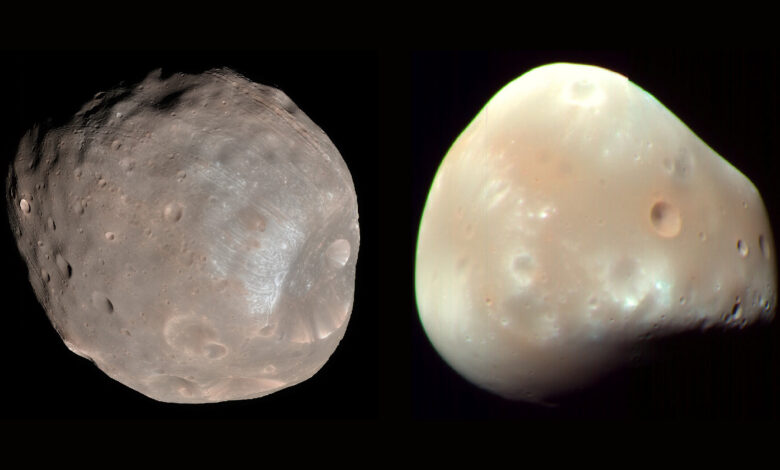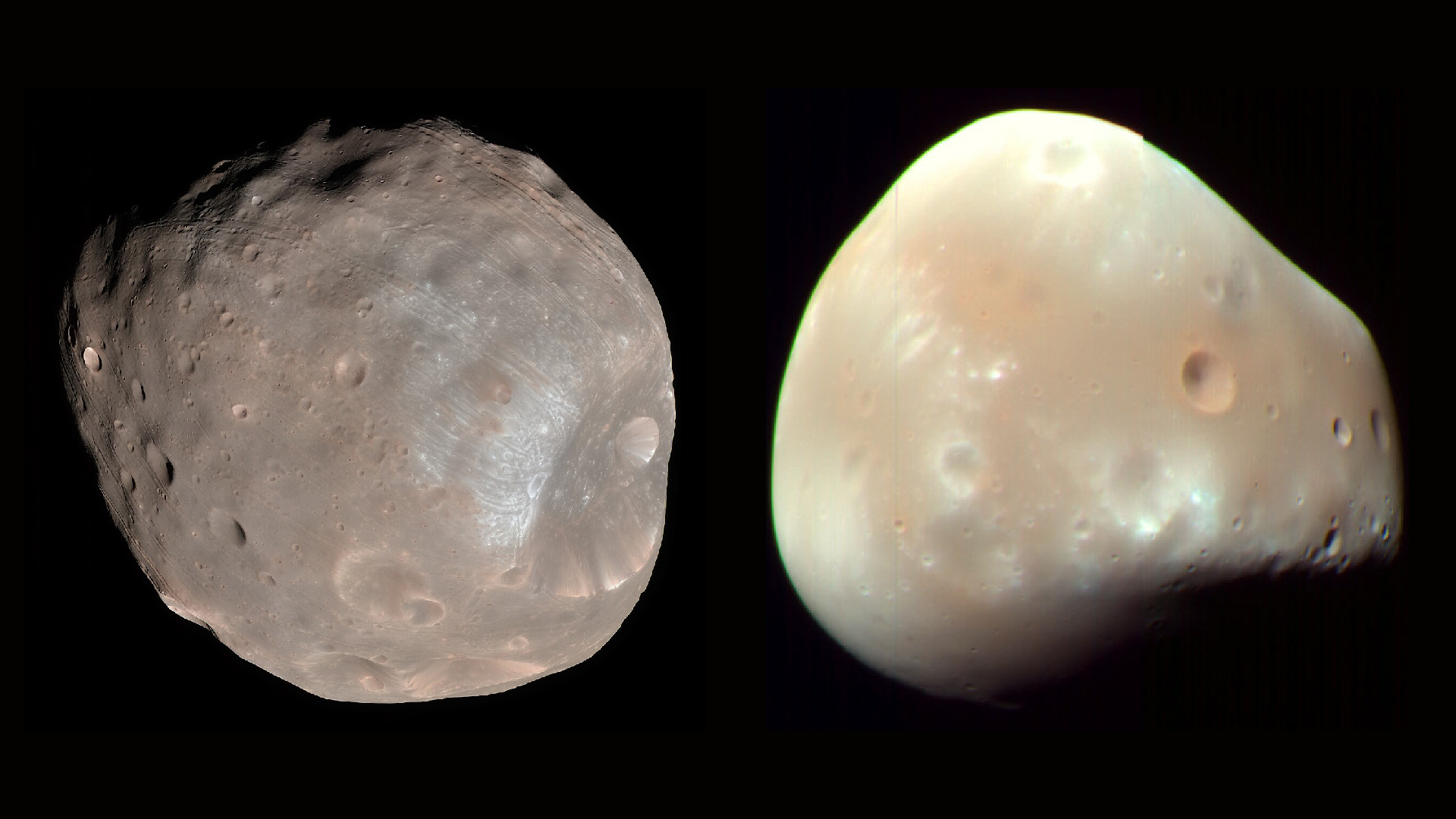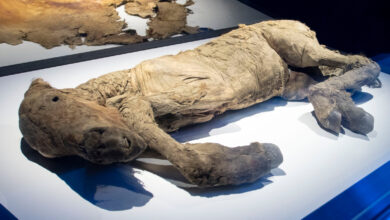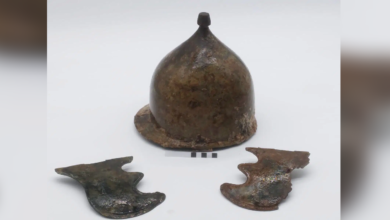Does Mars have a moon?

One summer night in 1877, American astronomer Asaph Hall was looking through his telescope in Washington, D.C. Mars was at its closest point to Earth in its orbit, and Hall had one question on his mind: Does the Red Planet have a moon?
After multiple nights of searching in heavy fog, Hall spotted not just one but two moons, which he named Phobos and Deimos, the “terror” and “panic” twins in Greek mythology whose parents were Ares and Aphrodite (Mars and Venus in Roman mythology). These moons, however, look very different from our own — and scientists still have a lot of questions about their origins.
“Phobos and Deimos are some of the smallest moons in our solar system,” Christopher S. Edwards, a professor of astronomy and planetary science at Northern Arizona University, told Live Science in an email.
Compared with our moon, which measures 2,159 miles (3,475 kilometers) across, Phobos and Deimos are just tiny specks in the sky. On average, Phobos measures just 14 miles (22 km) across, and Deimos is even smaller, about 7 miles (12 km) across on average. Their width is not consistent because these two tiny moons aren’t perfectly round.
“They are sort of bumpy, potato shaped, and are really, really dark, like the brightness of new asphalt,” Edwards explained.
A moon is defined as any naturally-formed body that permanently orbits a planet. But because of their irregular shape and miniature size, many scientists say that Phobos and Deimos look more like asteroids than moons.
It’s possible that Mars’ moons were originally asteroids that were captured by the planet’s gravitational pull. There’s also a theory that the two moons were created after a large object collided with Mars, creating debris that formed the two lunar bodies, similar to how Earth’s moon likely formed. Both of these hypotheses are still up for debate.
Related: How many moons are in the solar system?
“How the moons of Mars formed is a major open question for science,” Nancy Chabot, chief scientist for the Space Exploration Sector at the Johns Hopkins Applied Physics Laboratory, told Live Science in an email.

For now, there’s evidence on both sides. Visible and shortwave infrared spectral analyses of the moons point toward a composition consistent with asteroids, but it’s also difficult to explain the physics behind Mars snatching up two asteroids, Edwards said. That’s because Mars has a relatively weak gravitational pull, and the shape and location of the two moons’ orbits would be challenging to achieve through asteroid capture. Edwards added that data from the Hope Emirates Mars Mission suggests the two moons have slightly different compositions, further complicating things.
But an upcoming mission to Mars may soon provide more answers. The Martian Moons Exploration (MMX) mission by the Japan Aerospace Exploration Agency (JAXA), planned to launch in 2026, will travel to Mars and explore its two moons, and even bring a sample from Phobos back to Earth.
“JAXA’s MMX mission is very exciting and is set to be the first to unravel the mysteries of the Martian moons, including answering how they formed,” Chabot said.
Analyzing the composition of this sample will help clarify Phobos’ and Deimos’ origin, because a moon that was once an asteroid would have a very different chemical composition to a moon that formed from chunks of early Mars.
If the Phobos sample indicates that the moons formed from a collision with Mars, it could open the door to even more exciting discoveries. In that case, the sample could shed light on whether the early Red Planet had the potential for extraterrestrial life.
“These could in fact be samples of early Mars,” which may have once been hospitable for life, Edwards said.
Mars quiz: Is your knowledge of the Red Planet out of this world?
Source link




